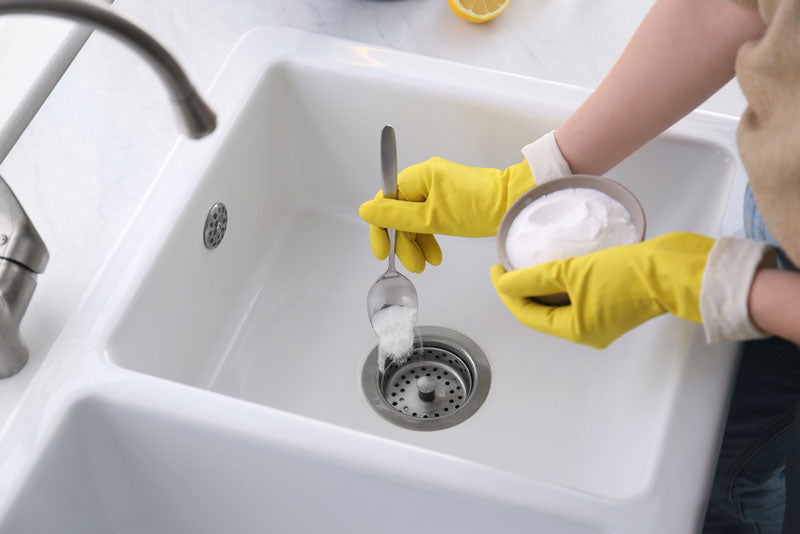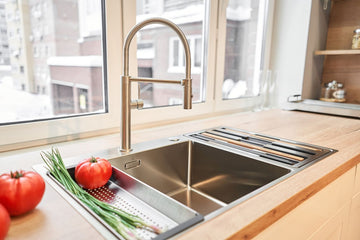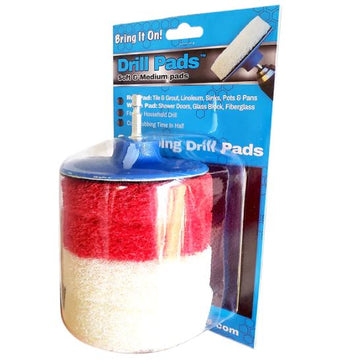The kitchen is the heart of a home, and the sink is undoubtedly its workhorse. But over time, your trusty kitchen sink drain can accumulate a cocktail of grease, food debris, and soap scum, causing unpleasant odors and clogs. Knowing how to clean kitchen sink drain can make your kitchen more inviting and prevent plumbing issues. This article dives deep into the practical, effective, and safe methods to keep that drain in pristine condition.
Why Regular Cleaning is Essential
Routine cleaning of your kitchen sink drain is not just about aesthetics. It prevents clogs, combats bacterial buildup, and extends the life of your plumbing system.
Avoid Clogs and Buildups
Over time, grease, food, hair, and soap can lead to blockages. Regular cleaning helps preempt these, ensuring water flows freely.

Combat Odor-Causing Bacteria
Drains are a hotspot for bacteria. By cleaning, you prevent foul smells and maintain a hygienic kitchen environment.
Extend Plumbing Lifespan
Consistent maintenance reduces the strain on pipes and plumbing systems, preventing wear and damage in the long run.
DIY Natural Cleaning Solutions
Chemical drain cleaners can be harsh and environmentally unfriendly. Explore DIY methods that are safe, effective, and eco-friendly.
Baking Soda and Vinegar
A classic combo! Pour a cup of baking soda down the drain, followed by equal parts vinegar. The effervescent action will dislodge grime and scum.

Hot Water and Salt
Pour a cup of salt, followed by boiling water, into the drain. The salt acts as a scouring agent, and the hot water melts away grease.
Lemon and Ice for Garbage Disposal
Freshen up your garbage disposal by grinding ice cubes and lemon peels. This combo sharpens the blades and leaves a refreshing scent.
Products for Enhanced Drain Care
While DIY methods are effective, there are products specifically designed to maintain and clean kitchen drains.
- Eco-friendly Drain Cleaners: Opt for products that are environmentally safe and free from harmful chemicals, such as Bring It On Cleaner. Such products not only unclog but also kill germs and ensure a hygienic drain environment.

- Microfiber Cloth and sponges: These are essential tools in maintaining a clean kitchen. While a sponge is great for daily cleaning, a microfiber cloth helps in ensuring the shine and hygiene of your sink and faucet.
Tools to Enhance Cleaning
Sometimes, DIY solutions might need a little help. Here are some tools to get the job done right.
Plungers
A good old plunger can create suction to dislodge blockages. Ensure you have a good seal and plunge vigorously.
Drain Snake
For stubborn clogs, a drain snake can navigate pipes, hooking and removing debris.
Natural Enzyme Cleaners
Opt for enzyme-based cleaners instead of chemicals. They break down organic material without harming your pipes or the environment.
Preventive Measures for a Clean Drain
Prevention is always better than cure. Here's how you can prevent the buildup in the first place.
Use Strainers
Fit your drain with a strainer to catch large debris and food particles, minimizing blockages.

Regularly Flush with Boiling Water
Make it a weekly habit to flush your kitchen sink drain with boiling water to melt away any potential buildup.
Avoid Pouring Grease
Never pour grease down the drain. It solidifies and causes blockages. Instead, collect it in a jar and dispose of it in the trash.
Addressing Common Kitchen Drain Issues
Not all sink issues are about cleanliness. Sometimes, a drain might need unclogging, or a faucet might malfunction. Here's a breakdown of how to handle these problems while ensuring hygiene and cleanliness.
Recognizing and Handling Clogs
Clogs can be the nemesis of a well-functioning kitchen drain. If you notice water pooling instead of draining, it's a clear sign.
- Sponges & Physical Blockages: Often, objects like a sponge can accidentally slip into the drain, causing an obstruction. Always keep such items away from the sink, and use a pair of rubber gloves to safely retrieve any blockages.
- Natural Ways to Unclog: Before resorting to commercial products, try natural methods. Pouring a mixture of equal parts hot water and dish soap can help break down the soft clogs.

Maintaining a Clean and Functional Faucet
A faucet is a gateway to the drain, and keeping it clean ensures a better overall hygiene.
- Daily Wiping: Use a microfiber cloth to wipe down the faucet daily, removing water spots and preventing germ buildup.
- Regular Check-ups: Make it a point to periodically check the cold and hot water knobs for any leakage. A dripping faucet can contribute to an increased water bill and cause undue moisture around the sink.
The Importance of the Trap
The U-shaped pipe under your sink, known as the trap, is crucial in preventing sewer gases from entering your home. It's also a common spot for blockages.
- Regular Cleaning: Every few months, consider manually cleaning the trap. Turn off the water, place a bucket underneath, unscrew the trap, and clean it out. Ensure to wear rubber gloves during the process.
Conclusion
In conclusion, understanding how to clean kitchen sink drains is a simple yet invaluable skill. It ensures your kitchen remains a clean, pleasant space and saves you potential plumbing bills down the road. Remember, the key is consistency and preventive care!
Frequently Asked Questions
Can I use apple cider vinegar instead of white vinegar for cleaning?
Yes, apple cider vinegar can also be effective. However, white vinegar is usually more acidic and often preferred for cleaning purposes.
Are commercial drain cleaners safe for my pipes?
While some commercial cleaners are safe, others can be corrosive. It's essential to read labels and avoid products with harsh chemicals.
Is there a natural way to keep my drain smelling fresh?
Yes, grinding citrus peels, like lemon or orange, in your garbage disposal can leave a pleasant scent.





